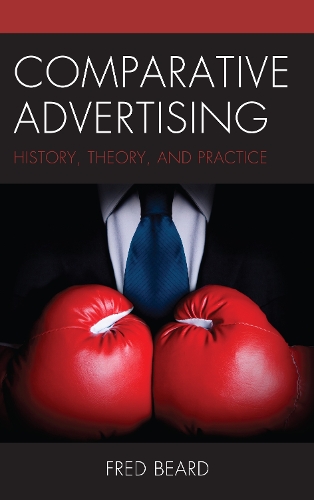
Comparative Advertising: History, Theory, and Practice
(Hardback)
Available Formats
Publishing Details
Comparative Advertising: History, Theory, and Practice
By (Author) Fred Beard
Bloomsbury Publishing PLC
Lexington Books
19th June 2018
United States
Classifications
Professional and Scholarly
Non Fiction
Advertising
659.1
Physical Properties
Hardback
246
Width 160mm, Height 238mm, Spine 26mm
558g
Description
From auto insurance to ready-to-eat soups and satellite TV services, both national and local advertisers in the United Statesand increasingly around the worldinvest a great deal of time and money on ads and campaigns in which they directly identify their competitors or refer indirectly to the other guys. Yet business decision-makers and advertising creative professionals have long believed that creating successful comparative advertising can be extraordinarily difficult. Many have discovered that a strategic or tactical misstep can easily lead to a disaster, such as negative responses from consumers, a successful legal challenge from one or more competitors, or the escalation of hostilities into an ongoing and damaging comparative advertising war. Comparative Advertising: History, Theory, and Practice offers scholars interested in why many business decision-makers believe they can win our loyalty by running down a competitoras well as anyone who plans, creates, or pays for advertisinga thorough and timely synthesis of the vast body of historical research, theory, and professional insights devoted to one of advertisings most frequently debated message tactics. The overall goal of this book is to discover answers to a simple question: Why do so many advertisers often rely on a message tactic that research and professional experience confirms they frequently regret using
Reviews
The Pepsi Challenge. Heinz vs Hunt's. Avis vs Hertz. These memorable ad campaigns show how powerful comparative advertising can be. But make one misstep and you can end up harming your brand. Or even helping the other guy. Beard (Univ. of Oklahoma) provides a look into the history and uses of comparative advertising. Comparative ads were virtually nonexistent until the late 1960s when the National Association of Broadcasters lifted its near ban on them, and Beard notes that's when they began appearing on TV. Once advertisers began to use product demonstrations to differentiate themselves and tout their superiority, the gloves were off. Pepsi won in taste tests. Heinz Ketchup was slower (thicker). Rental car company Avis tried harder. And, more recently, Samsung mocked Apple iPhone buyers as "Wall Huggers" looking for outlets to charge their phones. Though Beard isn't a fan of comparative advertising and questions its effectiveness, his analysis of its pros and cons show why, for better or worse, it is probably here to staywith or without Brand X. Summing Up: Recommended. Graduate students through faculty. * CHOICE *
Dr. Beards book offers a timely, interesting, and comprehensive account of the strategic use of comparative advertising in the United States and abroad. -- Darrel D. Muehling, Washington State University
This is a badly needed holistic look at comparative advertising and what we know about how and when it works. Beards historical perspective is extremely valuable, particularly given that comparative advertising has been used much more frequently in the U.S. than many other marketsbut is growing now in at least some other markets. The synthesis of research findings contained in this book is highly insightful and a great addition to the literature. -- Charles R. Taylor, Villanova University; Editor-in-Chief of International Journal of Advertising
A comprehensive and insightful analysis of comparative advertising research and practice. -- Amitava Chattopadhyay, INSEAD
Author Bio
Fred Beard is Gaylord Family Research Professor of Advertising in the Gaylord College of Journalism and Mass Communication, University of Oklahoma.
